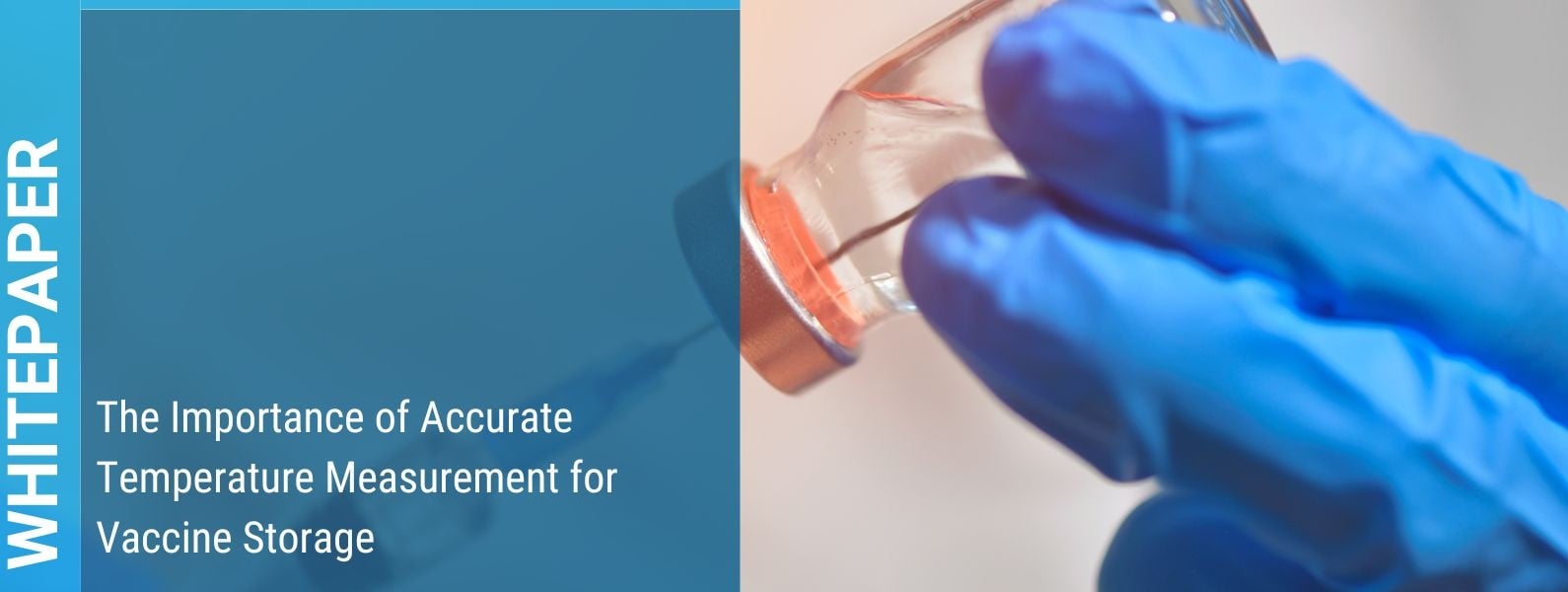The Importance of Accurate Temperature Measurement for Vaccine Storage
- Posted on
- By Praxas and Lascar
- Posted in Data Loggers, Immunization, Temperature Monitoring, Vaccine Cold Chain, Vaccine Storage
- 0

The potency of vaccines degrades quickly when they aren’t stored within the correct temperature range. Monitoring and recording of temperatures within fridges, freezers and containers used for storing vaccines is therefore well-established practice. However, ensuring that readings taken match the actual temperatures experienced by vaccines requires the methodical application of best practice. Failure to do so can lead to the administering of vaccines that lack the necessary potency to ensure effective immunisation, or the unnecessary disposal of valuable stock.
The Vaccine Cold Chain
Vaccines are active biological products that are damaged to varying extents by exposure to high and low temperatures. Once vaccine potency is lost, it cannot be regained. This may result in the failure of the vaccine to create the desired immune response and consequently it will provide poor protection. Unfortunately, vaccines do not change appearance when they have been compromised by temperatures outside the acceptable range. Only the continual use of suitable storage equipment and procedures can guarantee vaccine effectiveness.
Improving Temperature Stability
Even when using refrigeration equipment specifically designed for medical use, vaccines should be stored so as to maximise temperature stability. Common points in accepted best practice worldwide include:
- Store each type of vaccine in its original packaging and in a separate container.
- Position vaccines two to three inches from the unit walls, ceiling, floor, and door.
- Avoid storing vaccines in any part of the unit that may not provide stable temperatures or sufficient air flow, such as directly under cooling vents, in drawers, or on refrigerator door shelves.
- Avoid placing or storing any items other than vaccines, diluents, and water bottles inside storage units.
- If other medications and biological products must be stored in the same unit as vaccines, they must be clearly marked and stored in separate containers or bins from vaccines.
- Arrange vaccines in rows and allow space between them to promote air circulation.
For some refrigerators, placing water bottles in the unit can help maintain stable temperatures despite frequent opening and closing of unit doors, or in a power failure. Where used, these bottles should be placed on the top shelf and floor, and in the door racks.
Improving Temperature Stability
Although refrigerators and freezers will contain their own temperature regulator, which may also record data, it is not acceptable practice to rely solely on this as it constitutes a single point of failure. The digital data logger used must be independent of the mains power supply to the fridge itself and so will be powered by batteries.
Key features for accurate and reliable temperature monitoring of stored vaccines include:
- Accurate within ± 0.5°C (± 1°F)
- Display showing current, minimum, and maximum temperatures
- Alarm for out-of-range temperatures
- Logging interval, programmable by the user, to measure and record temperatures at least every 30 minutes
- Low-battery indicator
- Detachable buffered probe that accurately reflects vaccine temperatures
Potentially damaging fluctuations in temperature can be hidden if recording intervals are longer than a few minutes, and so effective data loggers will combine short logging intervals with a memory capable of storing long time periods logged at such intervals.
All data loggers should also be supplied with a calibration test certificate to national standards
Buffered Temperature Probes
A critical but often overlooked aspect of vaccine temperature monitoring is that it’s not enough simply to measure the temperature of the air inside the fridge or freezer. Air gets disturbed or replaced each time the door is opened, and also has a very different thermal inertia to vaccines themselves. Glycol has similar thermal properties to vaccine preparations and so using a probe sealed into a bottle of glycol ensures the readings taken accurately reflect the temperatures experienced by the vaccines and not just the air in the fridge.
Calibration and Maintenance
Calibration is a test process that confirms the accuracy of an individual data logger, distinct from the designed accuracy of that model of logger. Temperature loggers should therefore be supplied from new with a calibration test certificate that references the serial number of that unit. Due to the inevitable drift in the performance of individual components within the logger, calibration testing should be repeated at the frequency specified by the manufacturer, typically every 12 months. Modern digital data loggers should require no other maintenance, other than the replacement of batteries as soon as the low battery indicator activates. To ensure continuity in temperature records, a supply of spare batteries should be kept on hand at each location loggers are used.
Conclusions
There are two key modes of failure in vaccine cold chain storage, and both can be prevented by keeping accurate temperature records.
The first is that vaccines exposed to too high or too low temperatures, for a long enough period to degrade potency, can be identified and removed from use.
The second is to prevent the unnecessary disposal of vaccine stocks that appear to have a suffered loss of potency, but are actually undamaged and will still provide effective immunisation.
The costs associated with the loss and replacement of compromised vaccines should not be underestimated. According to official figures, during 2018 vaccine wastage in the UK alone had a value of at least £6.3 million. Public Health England accepts this is likely to be underreported and thus the true financial cost even greater.
For PDF click here


Comments
Be the first to comment...